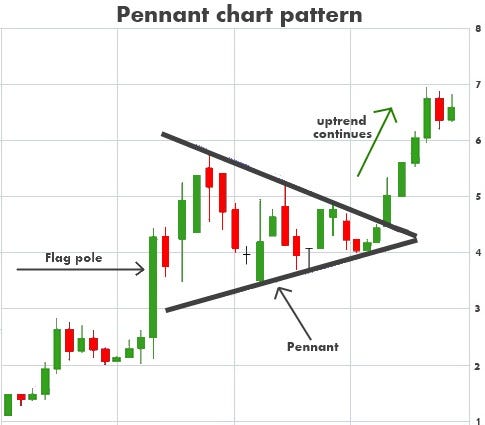20 Pro Facts For Deciding On Artificial Intelligence Stocks
Wiki Article
Top 10 Tips To Understanding Market Volatility For Ai Trading Stocks, Ranging From The Penny To copyright
Understanding market volatility in AI trading in stocks is vital, whether you are dealing with penny stocks or copyright assets. Here are 10 essential techniques to manage and take advantage of market volatility:
1. Find out what causes volatility.
Tips: Know the main elements that impact the volatility of your selected markets:
Penny stocks: news on the company, earnings report Low liquidity.
copyright: regulatory updates and advancements in blockchain technology, and macroeconomic developments.
Understanding the drivers of price changes can help you predict the potential price swings.
2. Use AI to Track Volatility Indexes
Make use of AI to track volatility metrics, such as:
Implied Volatility (IV) is the measure of price fluctuations in the future can be a helpful indicator.
Bollinger Bands - Highlights overbought/oversold situations
AI can process these indicators faster and with greater accuracy than manual methods.
3. Look at trends in volatility over time.
Tip: Use AI to study historical price movements and identify regular volatility patterns.
copyright assets generally show more volatility in the wake of major events like forks or halvings.
Why? Understanding past behaviors can help predict trends in the future.
4. Leverage Sentiment Analyses
Tip: Deploy AI to analyze sentiment from news social media, as well as forums.
Be on the lookout for penny stocks in niche markets as well as discussions about small-caps.
Examine Reddit discussions, Twitter conversations, and Telegram.
Reason: Sentiment shifts can trigger extreme volatility.
5. Automate Risk Management
Tips : Use AI to set position-sizing, trailing stop, and stop-loss rules automatically.
Why: Automation ensures you're protected in the event of unexpected volatility spikes.
6. Strategically, Trade Volatile assets are strategic
Tips: Select trading strategies that are suited to high-volatility markets
Penny Stocks: Invest in momentum trading strategies or breakout strategies.
Think about using trend-following and mean-reversion strategies.
How? Matching your approach to the volatility of the market can increase your chances of success.
7. Diversify Your Portfolio
Diversify your investment over different sectors, asset categories, and market caps.
Why diversification reduces overall impact The risk of extreme volatility in one region is lessened through diversification.
8. Be on the lookout for liquids
Tips: Use AI-based tools to evaluate bid-ask and market depth.
Reason: The limited liquidity of penny stocks as well as certain cryptos could create a higher risk of volatility and result in slippage.
9. Stay updated on Macro Events
Tips: Provide AI models with information on macroeconomic trends and events, as well as the central bank's policies.
What's the reason? Wider market events are often a cause of ripple effects on volatile assets.
10. Beware of emotional trading
Tip: Make use of AI to make decisions during high-volatility situations to avoid emotional bias.
The reason: Emotional reactions can lead to poor decisions, such as panic selling or over-trading.
Bonus: Use Volatility in Your Favor
TIP : Take advantage of volatility spikes to find opportunities to arbitrage quickly or scalping trades.
It is a fantastic opportunity for generating profits However, it is only possible to approach it with the right tools and a plan of action.
If you master these techniques will help you be able to recognize and control market volatility, allowing AI to optimize trading strategies for the copyright and penny stocks. Read the recommended best stock analysis website url for more tips including artificial intelligence stocks, ai stocks, ai copyright trading bot, ai trading app, ai for trading stocks, ai stock predictions, stocks ai, trading bots for stocks, stock analysis app, ai penny stocks to buy and more.

Top 10 Tips For Ai Stock Pickers And Investors To Pay Attention To Risk Metrics
Paying attention to risk metrics is essential for ensuring that your AI stocks picker, forecasts, and investment strategies are well-balanced and are able to handle market fluctuations. Knowing and reducing risk is essential to protect your investment portfolio from major losses. This also helps you to make informed, data-driven choices. Here are 10 top tips for integrating risk-related metrics into AI investing and stock selection strategies:
1. Know the most important risk metrics Sharpe Ratio (Sharpe Ratio), Max Drawdown and Volatility
Tips: Make use of key risk indicators such as the Sharpe ratio and maximum drawdown to assess the effectiveness of your AI models.
Why:
Sharpe ratio is a measure of the investment return relative to risk level. A higher Sharpe ratio indicates better risk-adjusted performance.
Maximum drawdown allows you to assess the possibility of big losses by assessing the loss from peak to trough.
Volatility quantifies price fluctuations as well as market risk. High volatility is associated with greater risk, whereas low volatility is associated with stability.
2. Implement Risk-Adjusted Return Metrics
TIP: Use risk-adjusted returns metrics like the Sortino ratio (which is focused on risk associated with downside) as well as the Calmar ratio (which measures returns to the highest drawdowns) to determine the actual performance of your AI stock picker.
Why: The metrics will show you the way your AI model is performing in relation to the risk level. This will let you to determine if the risk is justifiable.
3. Monitor Portfolio Diversification to Reduce Concentration Risk
Tip: Use AI to improve and control the diversification of your portfolio.
Diversification reduces the concentration risk that can arise when an investment portfolio becomes too dependent on a single sector, market or stock. AI can be used for identifying correlations between assets, and adjusting the allocations to minimize risk.
4. Track beta to gauge the market's sensitivity
Tip - Utilize the beta coefficient as a method to gauge how sensitive your portfolio is to overall market movements.
The reason is that a portfolio with a beta greater than 1 is more volatile than the market. On the other hand, a beta less than 1 suggests less risk. Understanding beta allows you to adapt your risk exposure to the market's fluctuations and the investor's risk tolerance.
5. Set Stop-Loss levels and take-Profit Levels based upon Risk Tolerance
Tip: Set stop-loss and take-profit levels using AI forecasts and risk models to control losses and lock in profits.
What is the purpose of stop-loss levels? They protect you against excessive losses while the take-profit level secures gains. AI can assist in determining the optimal level based on historical prices and the volatility. It ensures a balanced healthy balance between the risk of reward.
6. Monte Carlo Simulations to Assess Risk
Tips: Monte Carlo simulations can be used to simulate the results of a portfolio under different circumstances.
What is the reason? Monte Carlo simulations are a way to get an accurate picture of the future performance of a portfolio. This lets you plan more effectively for risky scenarios like extreme volatility and large losses.
7. Use correlation to assess the risk of systemic as well as unsystematic.
Tips. Use AI to study the relationship between assets within your portfolio and market indexes. You will be able to identify systematic risks as well as unsystematic ones.
Why: Unsystematic risk is unique to an asset, whereas systemic risk affects the whole market (e.g. recessions in the economy). AI can minimize unsystematic and other risks by suggesting less-correlated assets.
8. Monitor value at risk (VaR) to determine the magnitude of possible loss
Tip: Value at risk (VaR) which is based on the confidence level, can be used to calculate the possibility of losing a portfolio in a certain time.
Why: VaR is a way to get a clearer picture of what the worst case scenario is in terms of loss. This allows you assess your risk-taking portfolio under normal conditions. AI can adjust VaR to changing market conditions.
9. Set limit for risk that is dynamic in accordance with market conditions
Tips: Make use of AI to dynamically adjust risk limits based on the current market volatility as well as economic conditions and stock-related correlations.
Why? Dynamic risk limits shield your portfolio from over-risk during times of high volatility or uncertainty. AI can analyse live data and adjust your portfolio to ensure a risk tolerance that is acceptable.
10. Make use of machine learning to predict Tail Events and Risk Factors
Tips: Make use of machine learning algorithms that are based on sentiment analysis and historical data to predict extreme risks or tail-risks (e.g. market crashes).
The reason: AI can assist in identifying patterns of risk that conventional models might not be able detect. They can also forecast and help you prepare for unpredictable however extreme market conditions. Investors can be prepared to avoid catastrophic losses employing tail-risk analysis.
Bonus: Reevaluate your Risk Metrics when Market Conditions Change
Tip. Update and review your risk assessment as the market conditions change. This will allow you to stay on top of the changing geopolitical and economic trends.
The reason: Market conditions can change rapidly, and using old risk models could cause an untrue assessment of the risk. Regular updates let the AI models to adapt to market conditions that change and reflect the latest risk factors.
Conclusion
You can build a portfolio with greater resilience and flexibility by monitoring risk indicators and incorporating them into your AI stock picking, prediction models and investment strategies. AI is a powerful instrument for managing and assessing risks. It allows investors to take an informed decision based on data, which balance the potential gains against acceptable levels of risk. These suggestions are intended to help you develop an effective risk-management strategy. This will improve the stability and profitability for your investment. See the most popular ai sports betting recommendations for blog info including penny ai stocks, ai trading app, ai stock trading bot free, stock analysis app, ai stock trading, trading with ai, best ai penny stocks, best stock analysis app, best ai stock trading bot free, ai predictor and more.
